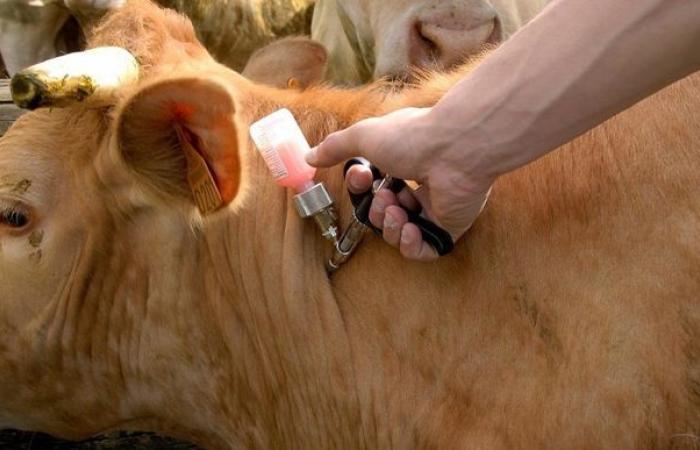Since 2006, “we have been facing an increase in health episodes linked to vector diseases », notes Valérie David, from the animal health department of the Livestock Institute. First the FCOwhich still exists today under a wide diversity of strains and variants, followed in 2011 by the arrival of the virus Schmallenberg and the HON in 2023.
Looking at the maps depicting the epizootic frontsbreeders will have to learn to deal with the health problem. First of all in France, where there is a shortage of colors to color the map of clinical cases of different diseases. “With the FCO, it’s a bit of a lottery at the moment. We don’t know what number of the disease we are going to encounter, and especially if it is characterized by a little flu, or by something much more impactful,” laments David Ngwa-Mbot, consulting veterinarian at GDS France. Same observation on a European scale: “we learned a few weeks ago that there was FCO-12 circulating in the Netherlands”.
Climate change favors the circulation of vectors
But why such relentlessness in the beef industry? THE climate change is not innocent in the spread of vector-borne diseases. “Climatic conditions in Northern Europe were favorable to the spread of FCO fifteen years before its emergence, in 2006.” In short, the rising temperatures expands the potential playground for culicoides.
Temperature also affects the speed of spread of the disease, particularly in Northern Europe. The warmer it is, the less virus replication in the culicoideus takes time. “This means that the virus becomes more quickly contaminating within the midge,” translates the veterinarian.
In Southern Europe, theincrease in vector number is otherwise impactful. “Heat increases the population of culicoides, and we find ourselves with a greater number of potential hosts around the animals.”
Climate change does not only impact culicoides. Stomoxes, horseflies, fleas, mosquitoes and even ticks should be monitored. At the top of the list is Crimean Congo Hemorrhagic Fever, which is a zoonosis transmitted by ticks and mosquitoes. “The Hyalomma tick is the primary vector of disease in animal health. It has now been present on the continent since 2015,” takes Virginie David as an example. Non-zoonotic, lumpy skin disease is also monitored by veterinary services. In short, now is not the time to relax on biosecurity.
Animal movements pointed out
But it’s not all about the climate. ” L’Anthropocene also promotes the emergence of this type of pathologies,” continues David Ngwa-Mbot. “The culicoides progresses like an oil patch around an outbreak, with a range of approximately 10 km per week. But when the disease leaps a hundred kilometers, there has been a bridge. » It is often the transport of animals that is to blame. This may also explain the appearance of FCO-3, then 12, in the Netherlands. “Rotterdam is one of the largest ports in Europe, with many import-export movement », explains the veterinarian. Conclusion, beware of the movement of animals.
But it is difficult to establish a balance between health and economics. “The beef market cannot be done without the movement of animals. The remedy must not finish off the patient,” says David Ngwa-Mbot, taking the example of breeders stuck with their animals following the restrictions put in place when the first cases of MHE were discovered.
Prepare for future epizootics
The time has come to supervise these transfers. To get out of the restricted areaPCR and disinfestation are required. As restrictive as they are, these protocols are essential in the eyes of the veterinarian. “As vector-borne diseases progress, we begin to have automatisms that allow us to weigh less on the markets. We must continue to organize ourselves in advance to know how to react. »
Supporting example with the arrival on the French market of the vaccine against FCO-3. “We are working on new vaccines which benefit from an ATU (temporary authorization for use) which is decided on a national scale. The Netherlands had theirs. And when the disease arrived in France, we requested it. But while we discuss, the disease advances,” concludes the veterinarian, hoping that these experiences will make it possible to gain responsiveness.






